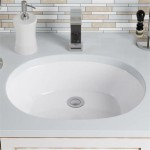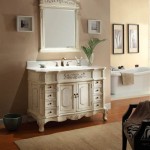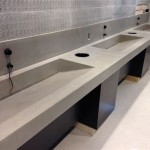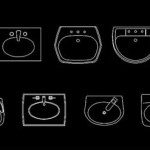30 Inch Bathroom Vessel Sink Vanity: A Comprehensive Guide
The 30-inch bathroom vessel sink vanity is a popular choice for homeowners seeking to optimize space in smaller bathrooms, powder rooms, or en-suite bathrooms while maintaining a stylish and functional aesthetic. This size offers a considerable upgrade in storage and design compared to pedestal sinks, while remaining compact enough not to overwhelm limited spaces. This article will explore the features, considerations, and benefits associated with selecting a 30-inch bathroom vessel sink vanity, providing a comprehensive guide for prospective buyers.
A bathroom vanity serves as the focal point of a bathroom. It provides a surface for the sink, as well as storage for toiletries, cleaning supplies, and other bathroom essentials. The addition of a vessel sink introduces a unique design element. Unlike undermount or drop-in sinks, vessel sinks sit atop the vanity countertop, creating a striking visual impact and allowing for a shallower vanity depth. The combination of a 30-inch vanity with a vessel sink offers a practical and visually appealing solution for many bathroom configurations.
Key Considerations Before Purchasing a 30-Inch Vessel Sink Vanity
Before committing to a 30-inch bathroom vessel sink vanity, several factors require careful consideration. These include spatial constraints, plumbing configuration, storage needs, material selection, and desired aesthetic.
Spatial Assessment: Accurate measurement of the available space is paramount. While a 30-inch vanity is designed for smaller bathrooms, it's crucial to ensure it fits comfortably without obstructing doorways, walkways, or other bathroom fixtures. Consider the vanity's depth, width, and height, including the additional height of the vessel sink itself. Leave adequate clearance around the vanity for comfortable movement. Account for door swing direction if the vanity includes cabinets.
Plumbing Compatibility: The existing plumbing configuration significantly influences the installation process. Check the location of water supply lines and drainpipes. Vessel sinks typically require a taller faucet to accommodate the sink's height. The drainpipe may need to be adjusted to align with the vessel sink's drain opening. In some cases, relocating plumbing lines might be necessary, which can incur additional costs and complexity.
Storage Requirements: Evaluate the storage needs carefully. A 30-inch vanity provides limited storage space compared to larger models. Determine what items need to be stored within the vanity and select a design that meets those requirements. Options include vanities with drawers, cabinets, or a combination of both. Consider open shelving for displaying decorative items or frequently used items, but be mindful of potential clutter.
Material Selection: The vanity's material directly affects its durability, aesthetics, and maintenance requirements. Common materials include solid wood, plywood, MDF (Medium Density Fiberboard), and particleboard. Solid wood is the most durable and aesthetically pleasing option but also the most expensive. Plywood offers good stability and moisture resistance. MDF is a cost-effective alternative but is more susceptible to water damage than solid wood or plywood. Particleboard is the least expensive option but also the least durable. The countertop material also warrants consideration. Common options include granite, marble, quartz, solid surface, and laminate. Each material offers different levels of durability, stain resistance, and aesthetic appeal.
Aesthetic Compatibility: The vanity's style should complement the overall bathroom décor. Consider the existing color scheme, architectural style, and overall design theme. Vessel sinks are available in a wide range of materials, shapes, and finishes, allowing for customization and creative expression. Common vessel sink materials include ceramic, glass, stone, and metal. Choose a vanity and vessel sink that work together to create a cohesive and visually appealing design.
Types of 30-Inch Bathroom Vessel Sink Vanities
The market offers a diverse selection of 30-inch vessel sink vanities, each with unique features and characteristics. Understanding the different types available allows for informed decision-making.
Freestanding Vanities: Freestanding vanities are the most common type. They stand independently on the floor, providing ample storage space underneath. These vanities are relatively easy to install and offer a classic, traditional look. Freestanding vanities are a good choice for bathrooms with existing plumbing configurations.
Wall-Mounted Vanities: Wall-mounted vanities, also known as floating vanities, are mounted directly to the wall, creating a modern and minimalist aesthetic. These vanities maximize floor space, making them ideal for small bathrooms. Wall-mounted vanities require careful installation to ensure they are securely attached to the wall studs. The plumbing must also be routed within the wall cavity.
Corner Vanities: Corner vanities are designed to fit into corners, maximizing space utilization. These vanities are an excellent choice for small powder rooms or bathrooms with awkward layouts. Corner vanities are available in both freestanding and wall-mounted configurations.
Vanities with Drawers: Vanities with drawers provide organized storage for toiletries, makeup, and other small items. Drawers can be full-extension or partial-extension, depending on the design. Consider the number and size of drawers when selecting a vanity. Soft-close drawer mechanisms are a desirable feature that prevents slamming and reduces wear and tear.
Vanities with Cabinets: Vanities with cabinets offer enclosed storage for larger items, such as cleaning supplies, towels, and extra toiletries. Cabinets can have adjustable shelves to accommodate different storage needs. Consider the size and configuration of the cabinets when selecting a vanity.
Vanities with Open Shelving: Vanities with open shelving provide easy access to frequently used items and allow for displaying decorative items. Open shelving can create a more spacious and airy feel in the bathroom. However, open shelving requires regular cleaning and organization to prevent clutter.
Installation and Maintenance of a 30-Inch Vessel Sink Vanity
Proper installation and regular maintenance are essential to ensure the longevity and performance of a 30-inch vessel sink vanity.
Installation Guidelines: Installation typically involves several steps: removing the old vanity (if applicable), preparing the plumbing connections, assembling the new vanity, mounting the vanity to the wall or floor, connecting the water supply lines and drainpipe, and sealing the countertop and sink. If unfamiliar with plumbing or carpentry, it is advisable to hire a professional installer to ensure proper installation and prevent leaks or damage. Always follow the manufacturer's instructions carefully.
Cleaning and Maintenance: Regular cleaning is essential to maintain the vanity's appearance and prevent damage. Wipe down the countertop and sink regularly with a mild detergent and water. Avoid using abrasive cleaners, which can scratch or damage the surface. Clean the vanity's cabinet doors and drawers with a damp cloth. Check the plumbing connections periodically for leaks. Tighten any loose connections promptly.
Preventing Water Damage: Water damage is a common problem in bathrooms. To prevent water damage, ensure the vanity is properly sealed around the edges and seams. Use a silicone sealant to create a watertight barrier between the countertop and the sink. Wipe up spills immediately to prevent water from seeping into the vanity's frame. Ensure proper ventilation in the bathroom to reduce humidity levels.
Addressing Common Issues: Common issues with bathroom vanities include loose hinges, sticking drawers, and water stains. Tighten loose hinges with a screwdriver. Lubricate drawer slides with silicone spray to prevent sticking. Remove water stains with a mild cleaning solution or a specialized stain remover. If the vanity's finish is damaged, consider refinishing or repainting it to restore its appearance.
Choosing the right 30-inch bathroom vessel sink vanity requires careful consideration of various factors, including space constraints, plumbing configurations, storage needs, material selection, and aesthetic preferences. By understanding the different types of vanities available and following proper installation and maintenance guidelines, homeowners can select a vanity that meets their needs and enhances their bathroom's functionality and style.

Vc Cucine 30 In W X 18 5 D 31 H Modern Bathroom Vanity White With Ceramic Single Top Vessel Sink Us02bpvc Mz J 401 The Home Depot

Vc Cucine 30 In W X 18 5 D 31 H Modern Bathroom Vanity White With Ceramic Single Top Vessel Sink Us02bpvc Mz J 401 The Home Depot

Torino 30 White Bathroom Vanity Vessel Sink Com

Vc Cucine 30 In W X 18 5 D 31 H Modern Bathroom Vanity Gray With White Ceramic Single Top Vessel Sink Us02hmkq Mz J 401 The Home Depot

30 Modern Style Vessel Sink Giovanni Bathroom Vanity Model Hf3 Bentoncollections
-400.jpg?strip=all)
ᐈ 30 Inch Vessel Sink Buy

Vc Cucine 30 In W X 18 5 D 31 H Modern Bathroom Vanity Dark Gray With White Ceramic Vessel Sink Us02sh Mz Ls 401 The Home Depot

Vc Cucine 30 In W X 18 5 D 31 H Modern Bathroom Vanity White With Ceramic Single Top Vessel Sink Us02bpvc Mz J 401 The Home Depot

Narrow Red Oak Vanity For Vessel Sink Unfinished Bathroom

Fresca Bari 30 In White Single Sink Bathroom Vanity With Ceramic Top Mirror And Faucet Included The Vanities Tops Department At Com
Related Posts







